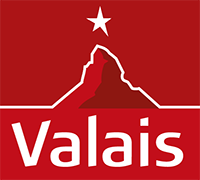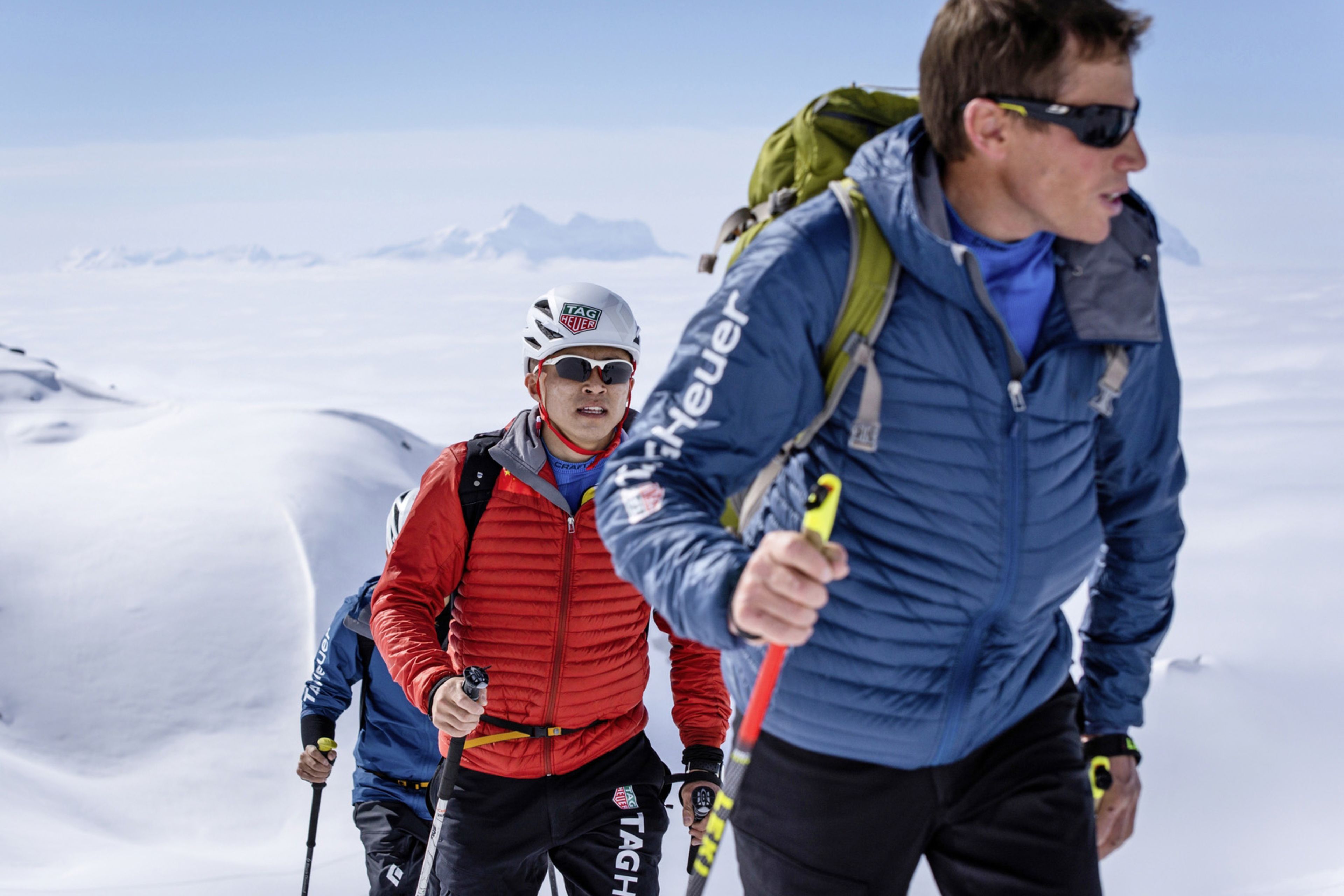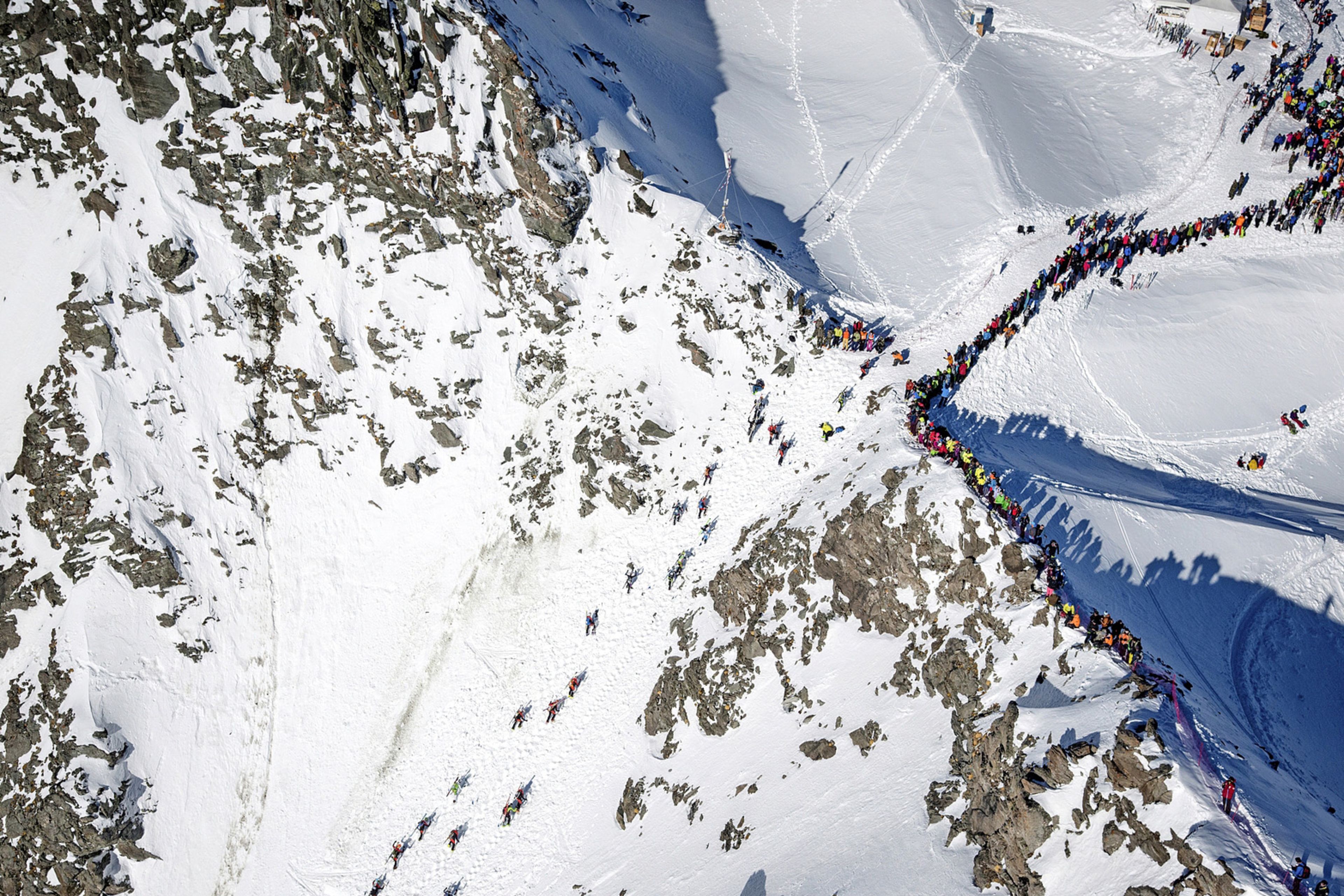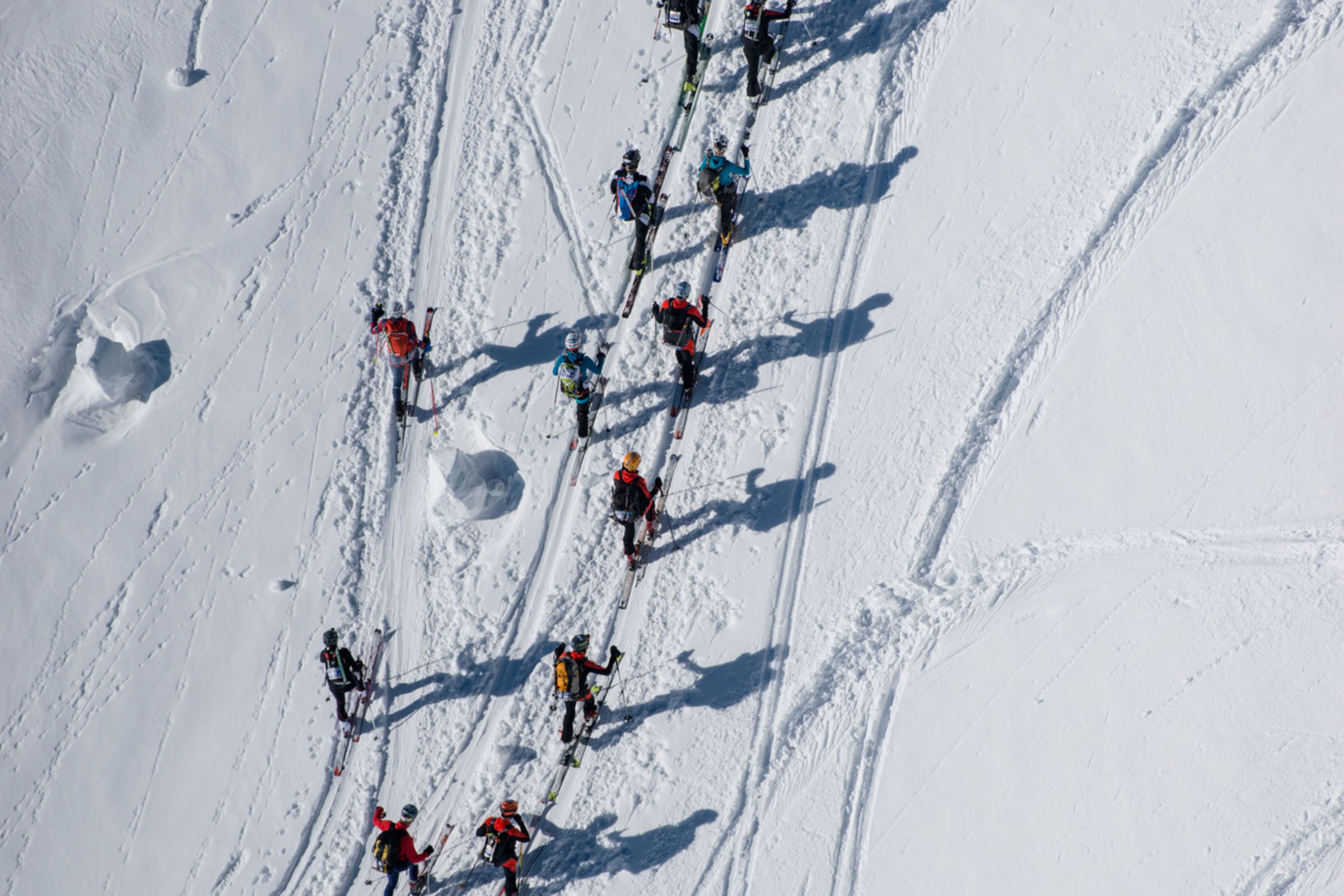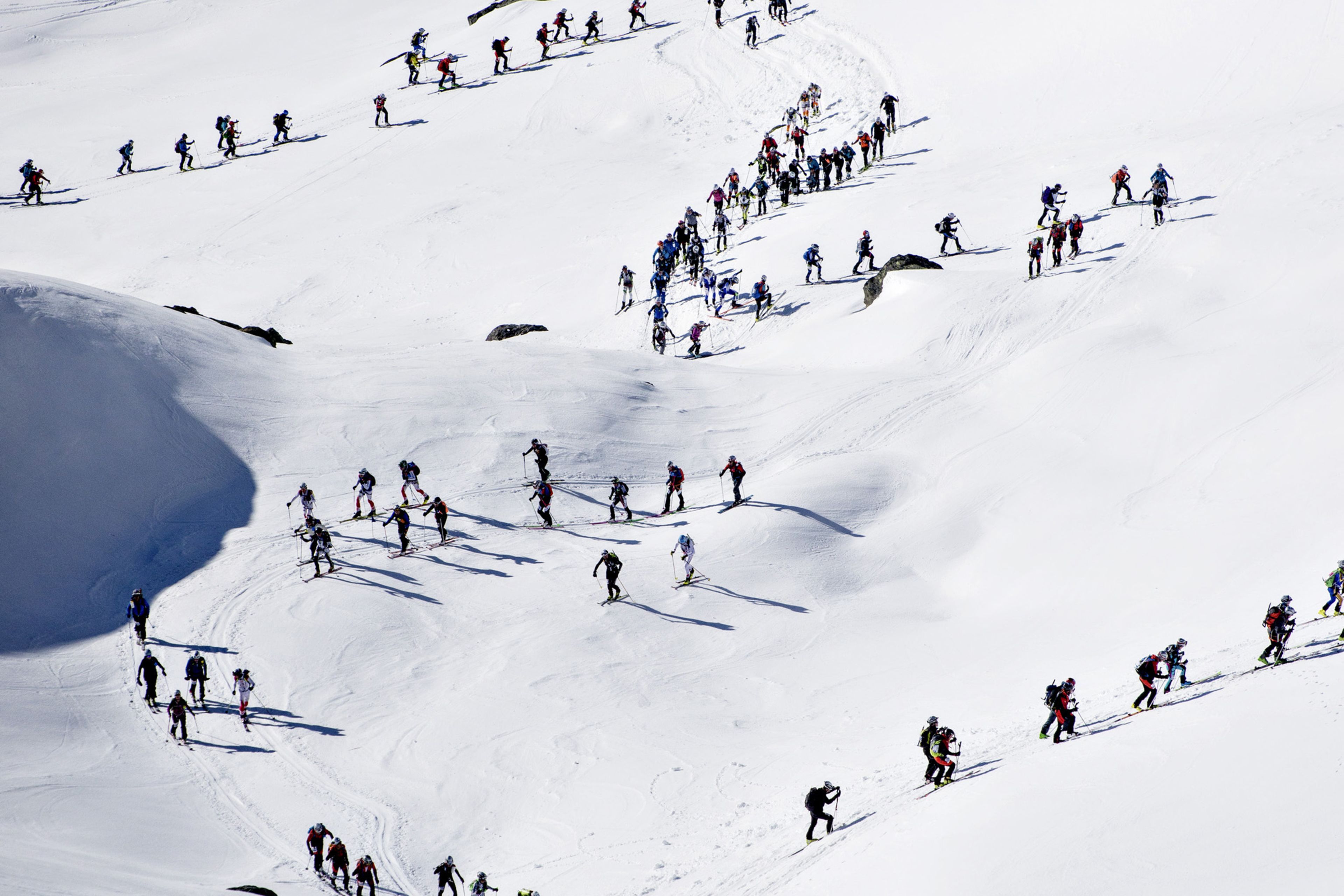The record-holder

The Patrouille des Glaciers, as the legendary Valais race is called, is gruelling.
The challenge is to cover the distance from Zermatt to Arolla to Verbier on touring skis. Each patrol is a team of three, as stipulated by the rules. It’s a distance of over 50 effective kilometres, up and down over 4000 altitude metres in total. Only the toughest and fittest make it through to the end.
Florent Troillet is one of the true greats of this legendary race, which was first organised by the Swiss Army in 1943. The aim of the race back then was to test and increase the army’s operational readiness. For a long time only military patrols took part, but the high-altitude mountain race has long since become the ultimate test of strength and stamina. Florent Troillet was born and bred in Lourtier, Val de Bagnes, where he still lives to this day. As a young lad he observed the invasion of athletes competing in this monster of a race held every two years. “Even back then I thought: I want to do that one day too, I want to win this race one day.” Florent Troillet is a man of the mountains: quiet, concentrated, focused. When he talks about winning, about the record that he and his teammates Martin Anthamatten and Yannick Ecoeur set in 2010, it sounds just like any old information he’s passing on. It took the three men just 5 hours, 52 minutes and 20 seconds in 2010 for the Zermatt–Verbier course – 24 minutes less than the previous record-holder. “When you keep your eyes set on a goal, then you also reach it,” Troillet explains. His first goal was simply to make it to the end of the race, his next, to break the course record. That’s how easy it is – if you are Florent Troillet.
No wonder that his expert knowledge is in demand. After a Chinese patrol had registered for the 2016 race, Troillet was asked if he would train the athletes from China. He was very happy to do so, he says. It was interesting and ended up also being great fun. The Chinese were athletes and able to ski somewhat. “On the ski run,” Troillet says with a laugh. Their fitness level was good, but they didn’t have much of a clue about the mountains. Initially a translator was always present, as there were some serious language barriers. “Towards the end, though, we managed to make ourselves understood pretty well,” Troillet says. The high mountain specialist was impressed by the two comrades: “They had simply set their minds on completing this Patrouille des Glaciers. And they did whatever it took to reach this goal. For me it was a real pleasure and very satisfying to accompany them on their journey.” Whereas the initial plan was for a Chinese three-man patrol to compete alone, when only Kang Hua and Xin Detao were left in the end, Troillet stepped in without further ado and completed the Patrouille with them.
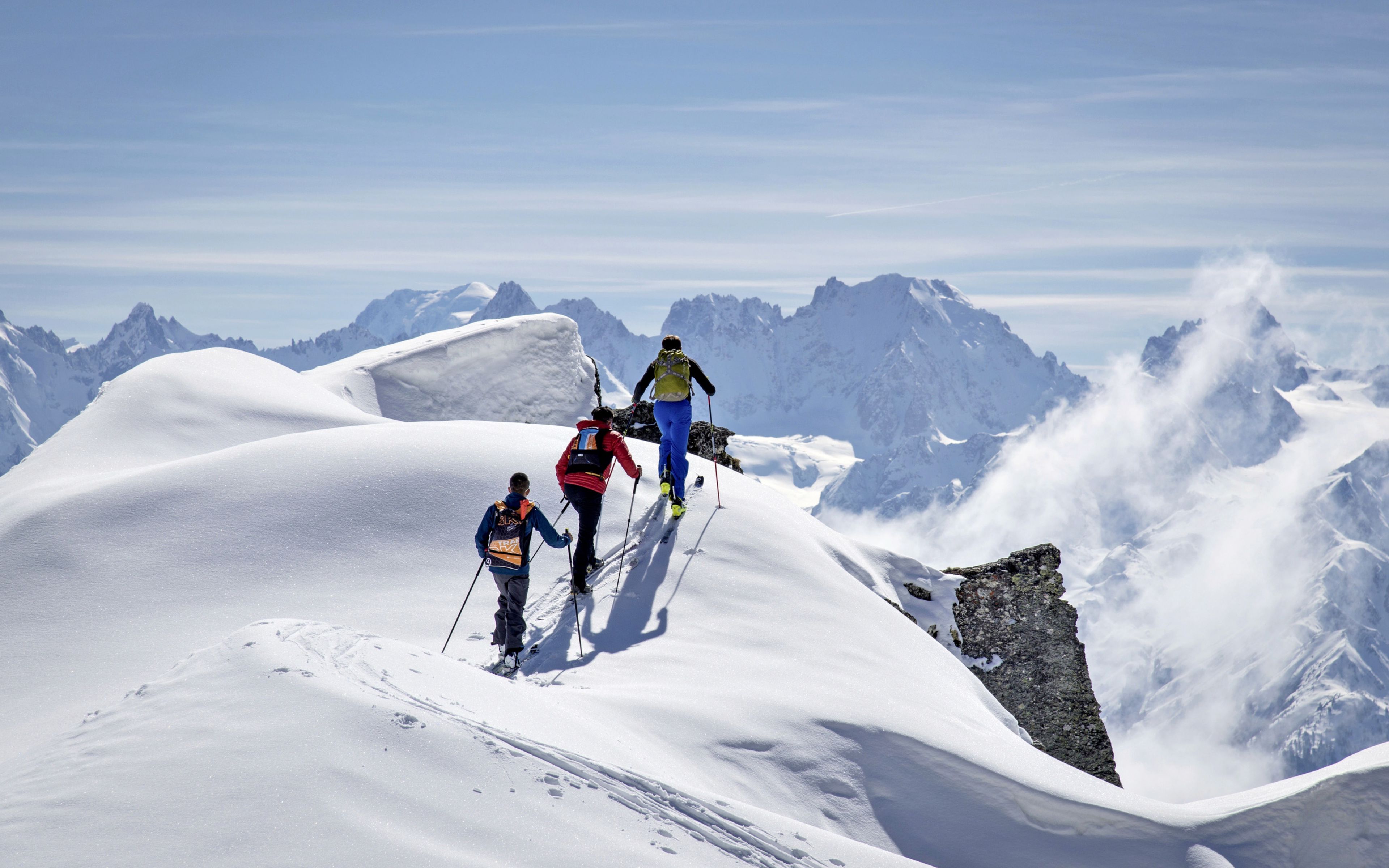
And it’s not just the Chinese patrol team; other newcomers to the Patrouille des Glaciers also turn to Troillet for training sessions and mountain insights, mostly in army training camps. Three days’ tuition on the mountain, practising alpine mountaineering techniques, roped skiing, handling the avalanche transceiver and much more. If anyone is unsure whether they can manage the whole of the original Patrouille, they can also opt for the short version from Arolla to Verbier. But beware: that’s still equivalent to fifty kilometres without altitude difference! For the others, Arolla, a mountain village in the most southerly part of Valais, is the stopover roughly halfway along the route. The two Chinese, Kang Hua and Xin Detao, wanted to complete the short course beginning in Arolla. When they joined the race, the others had already been under way for several hours. The race starts off in Zermatt between 10pm and 3am. They set off on foot, running in trainers; skis and ski boots have to be attached to the rucksack. The patrols run like this for more than seven kilometres and 650 altitude metres, as in a mountain run, and only then do they switch shoes and strap their skis on. Their path continues uphill to the edge of the Tiefmatt Glacier, where the patrols are required to rope up. At Tête Blanche (3650 metres), they have reached the highest point of the route. It’s cold here, and the wind can push the temperature down as low as minus 20 degrees. After reaching the Mont Miné Glacier, there is a downhill stretch of about 400 metres – not quite so easy in the new snow, roped to each other and in competition with all the other patrols. The field is limited to a total of 4200 participants, meaning there are 1400 patrols at most. That’s a lot, but patrols interested in competing still regularly have to be turned away. Then there follows another climb to the Bertol Pass, after which it’s downhill to the stopover in Arolla. This is where Troillet, Kang and Xin join the race with the number 1281. Right away it takes them uphill to the Col de Riedmatten, then along by the Grande Dixence reservoir, and a steep climb on foot along the Rosablanche corridor. After another stretch with skins on the skis comes the final descent to Verbier – where thousands enthusiastically receive the crazy patrouilleurs. “It is a tremendous feeling when you arrive in Verbier,” Troillet remembers. It was the same for his team mates; by then the ranking was irrelevant. Patrol 1281’s finishing time was 5 hours, 57 minutes and 44 seconds. That’s longer than Troillet took when he set a new record for the whole course – but for two men without any mountain experience, it’s a considerable achievement.
Troillet himself will no longer actively participate in the Patrouille des Glaciers. Nor in the Ski Mountaineering Championships, for which he was once on the national team. He loves his job as a border guard and has other priorities: more time with his wife Florence, their two-year-old daughter Noëlle and one-year-old son Louis. Except perhaps if another Chinese patrol enters – Kang and Xin want to come back in 2018 and “finish among the first eight”.
Interview: Monique Ryser Fotos : David Carlier
Where water is king
Next story

